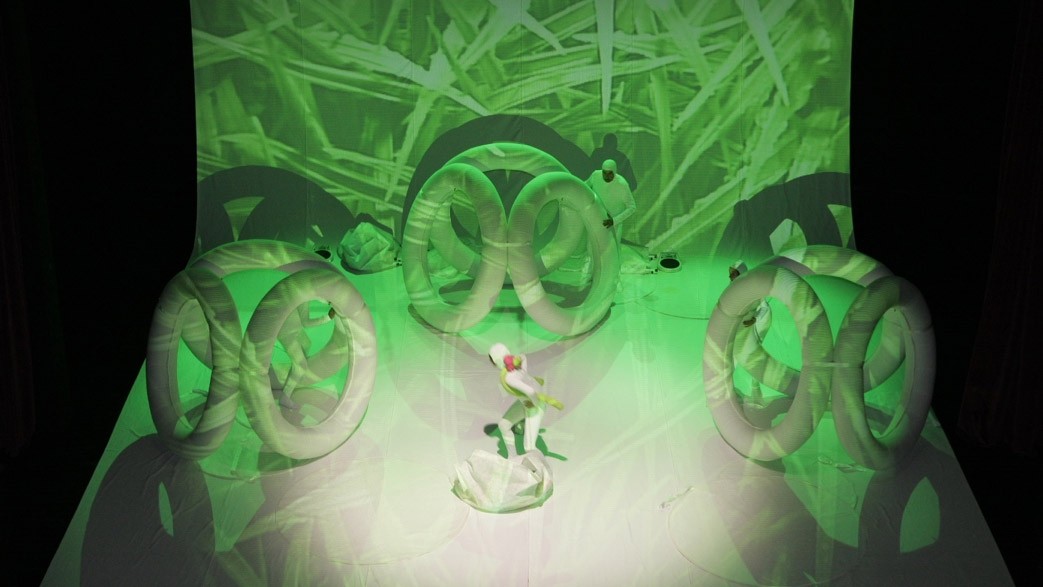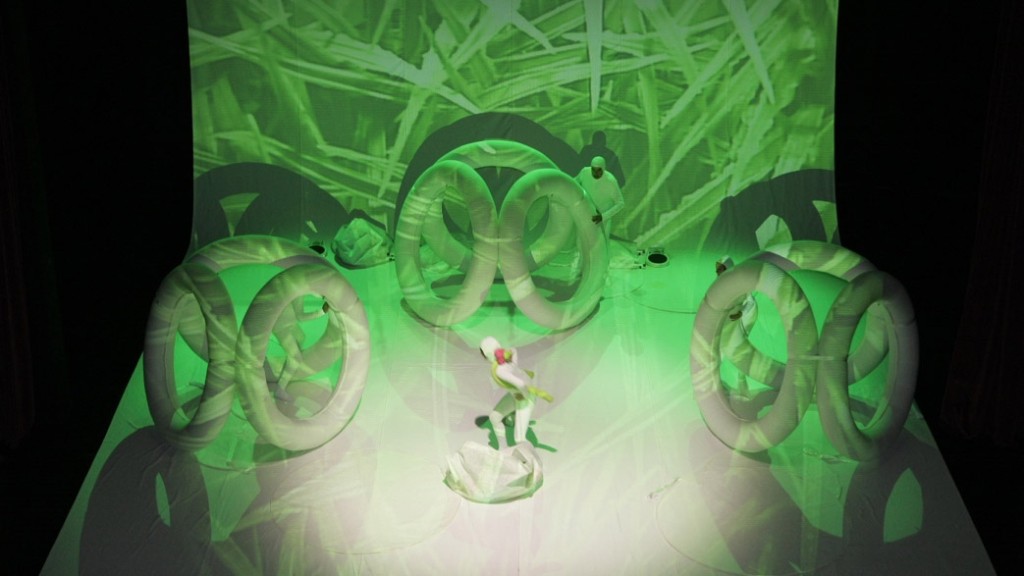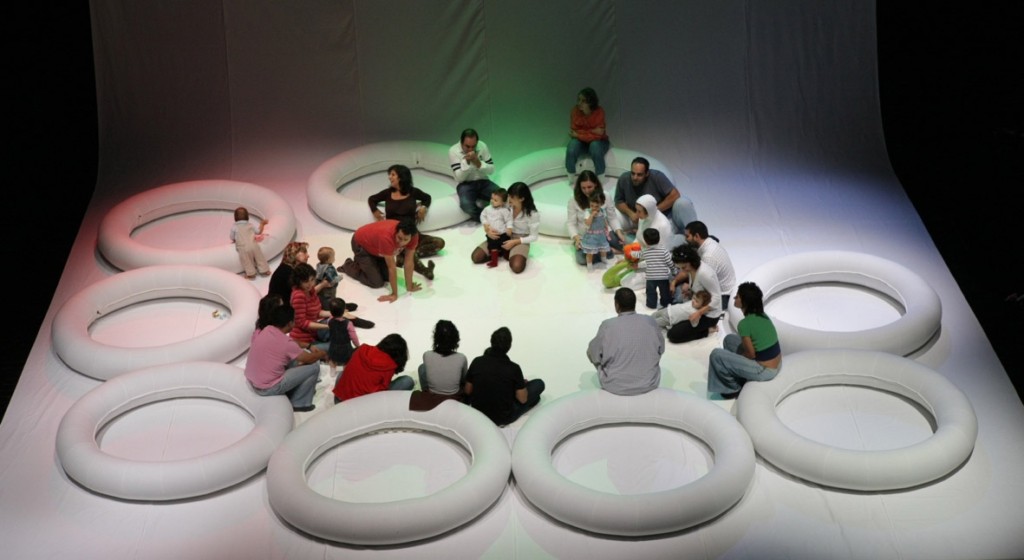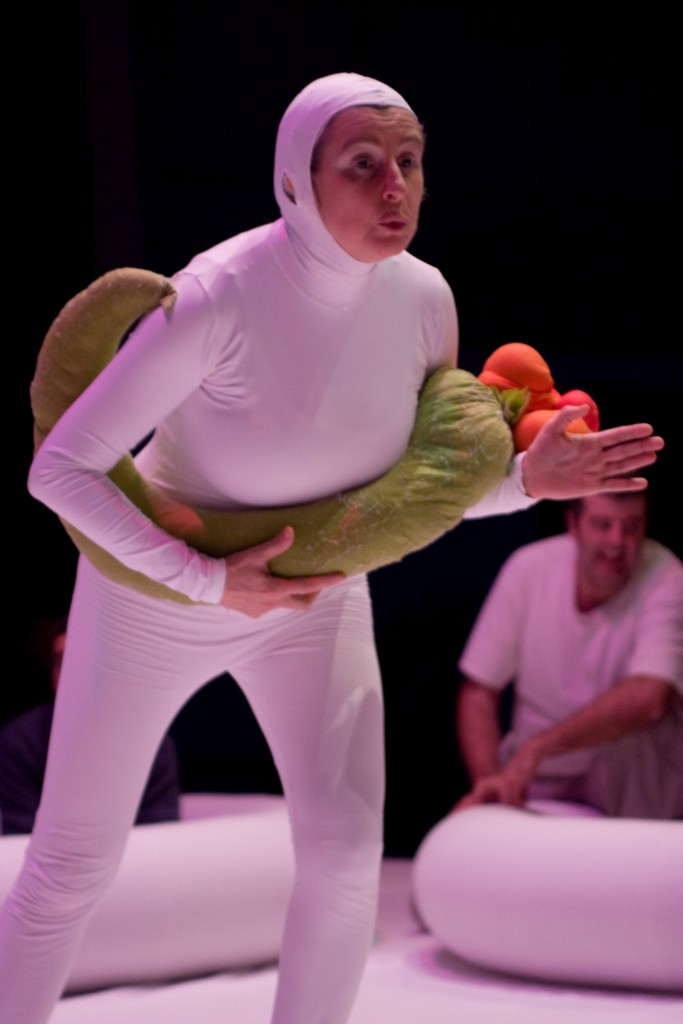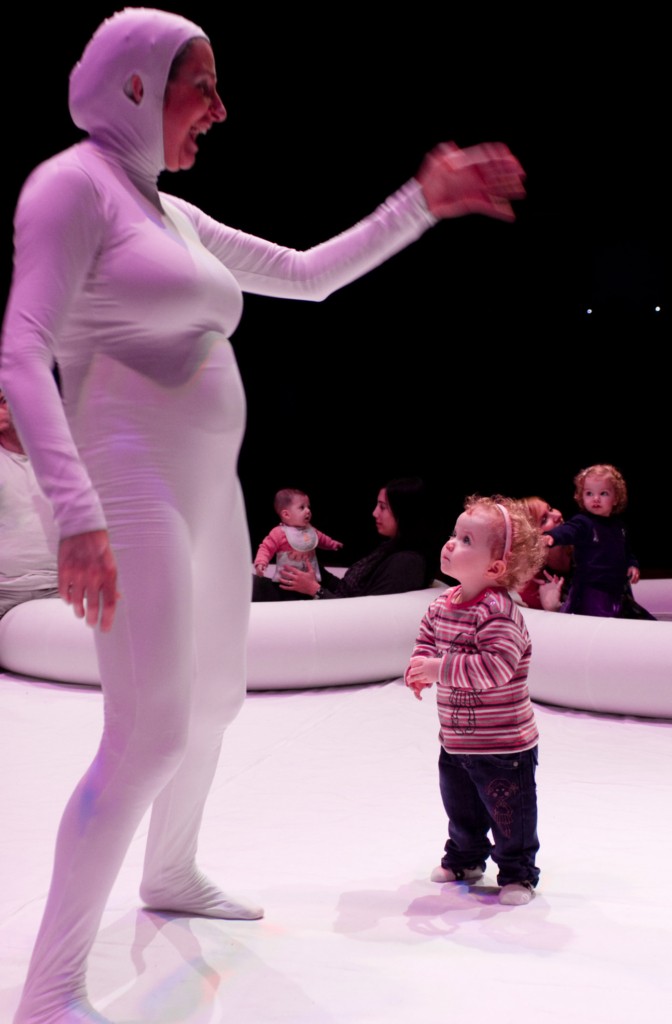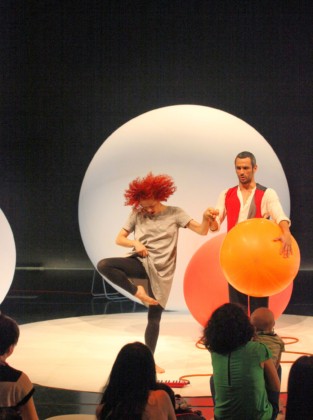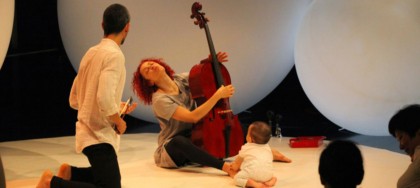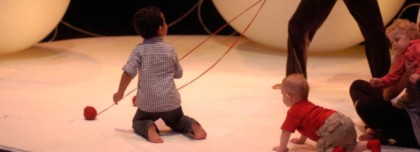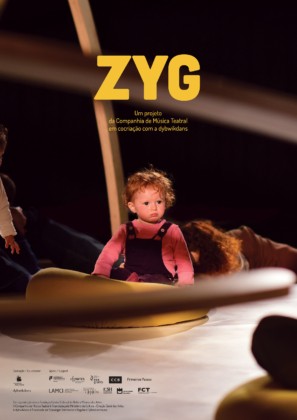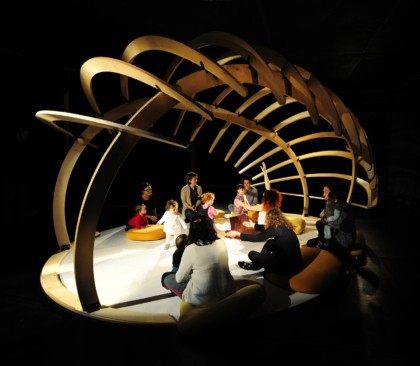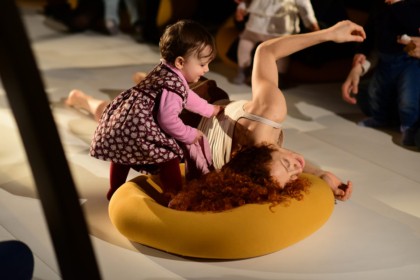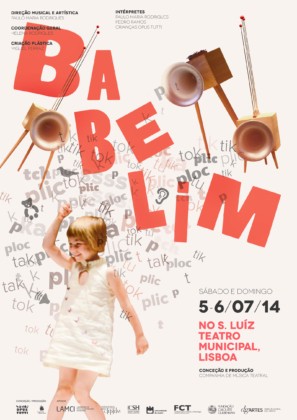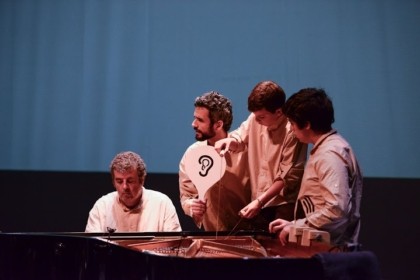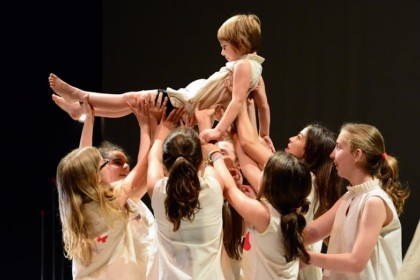Bebé Plim-Plim (Baby Plim-Plim) was created following BebéBabá and Andakibebé, two other works conceived by Companhia de Música Teatral and the first Portuguese theatre-music creations aimed specifically at families with babies.
Baby Plim-Plim starts by inviting families with babies to a workshop based on CMT’s experience of music sessions for babies, inspired by the ideas of Edwin Gordon and Colwyn Trevarthen. The next day, the “seeds” of rhythm and vibration lead to more elaborate music, which can involve the whole community in a show that is a hymn to the desire to communicate—a desire present from birth.
Bebé Plim-Plim’s music is a “grammelot” made of electronically manipulated babies’ vocalisations and musical variations by Bach, Monk, Schwitters, and Balla, along with gamelan and traditional Portuguese music, in a sophisticated play of phonemes, syllables and rhymes. The voice becomes the primary component of music and communication. During the show, the workshop setting becomes a canvas on which light and video can be painted, and where worldly forms can be built from large circular shapes. The actors/singers are enigmatic, amusing and tender beings. They speak in “universal music” and inhabit an immersive space that sometimes extends into the audience.
In a process of constant change and abstraction, the scenes take the audience to forests, the sky, a ship, the bottom of the ocean, to as many places as the imagination can produce from the available colors and shapes. The magic of white allows for a continent of every color. Bebé Plim-Plim encompasses both a workshop and a show: these are different but complementary types of artistic creation. The workshop offers the baby and one or two carers an adventurous experience; the show is for the baby and for those who want to see him or her develop—for everyone, then, as this artistic language takes us back to the beginning of human interaction and the roots of musical communication.
